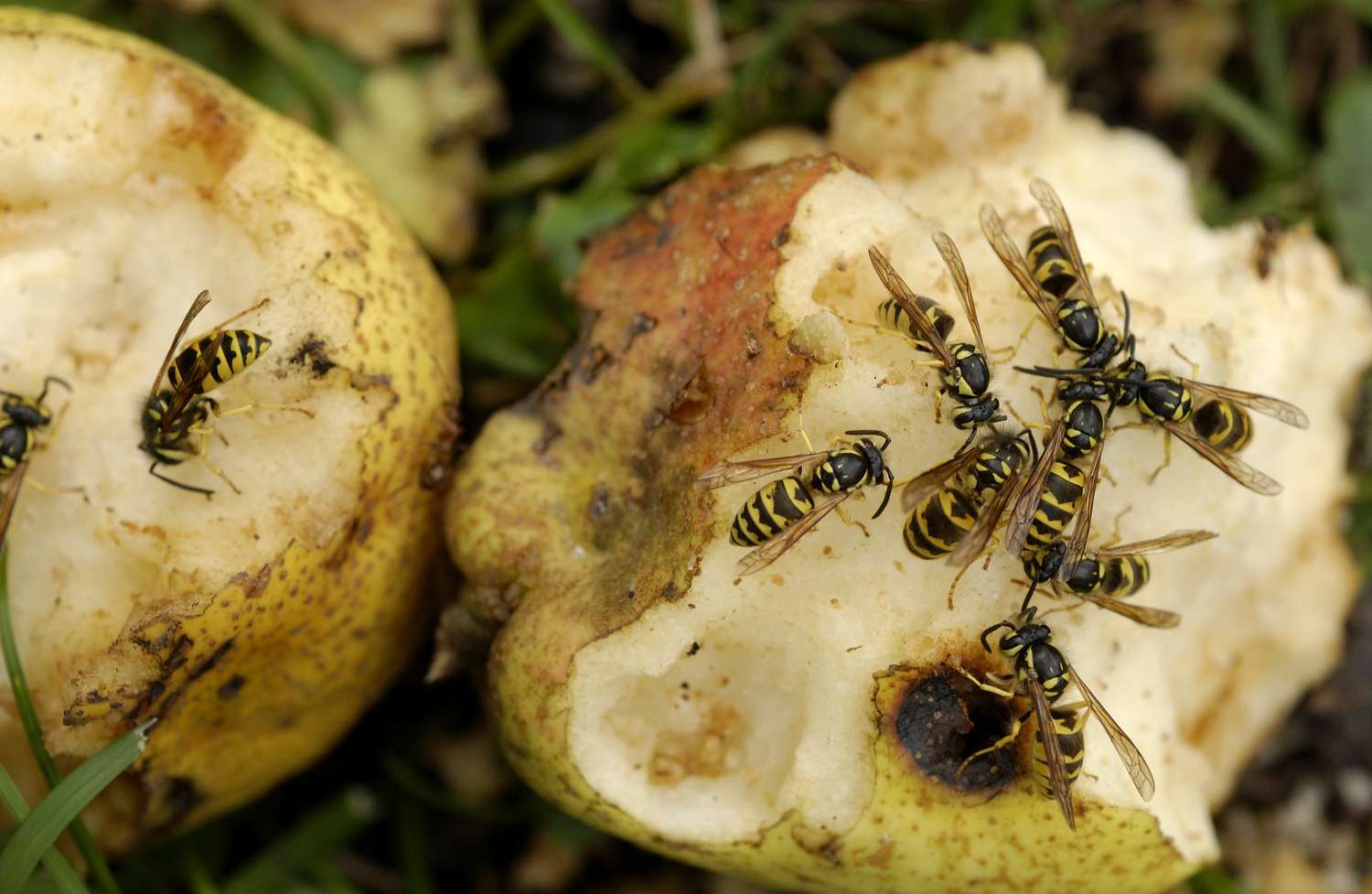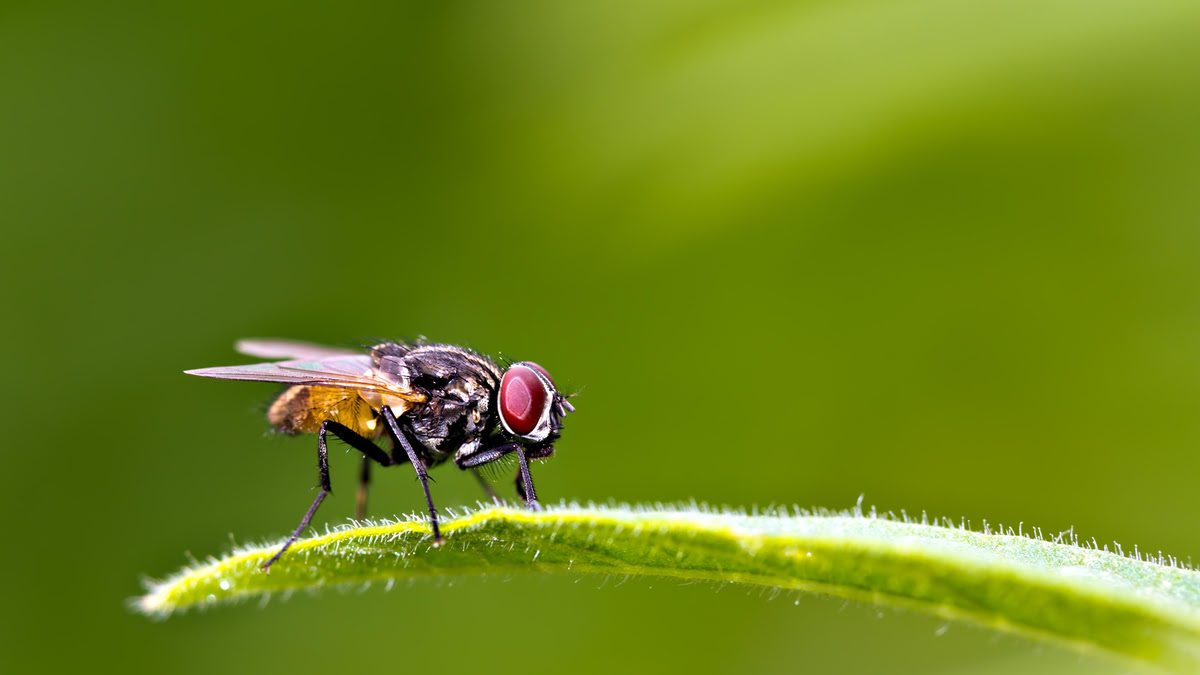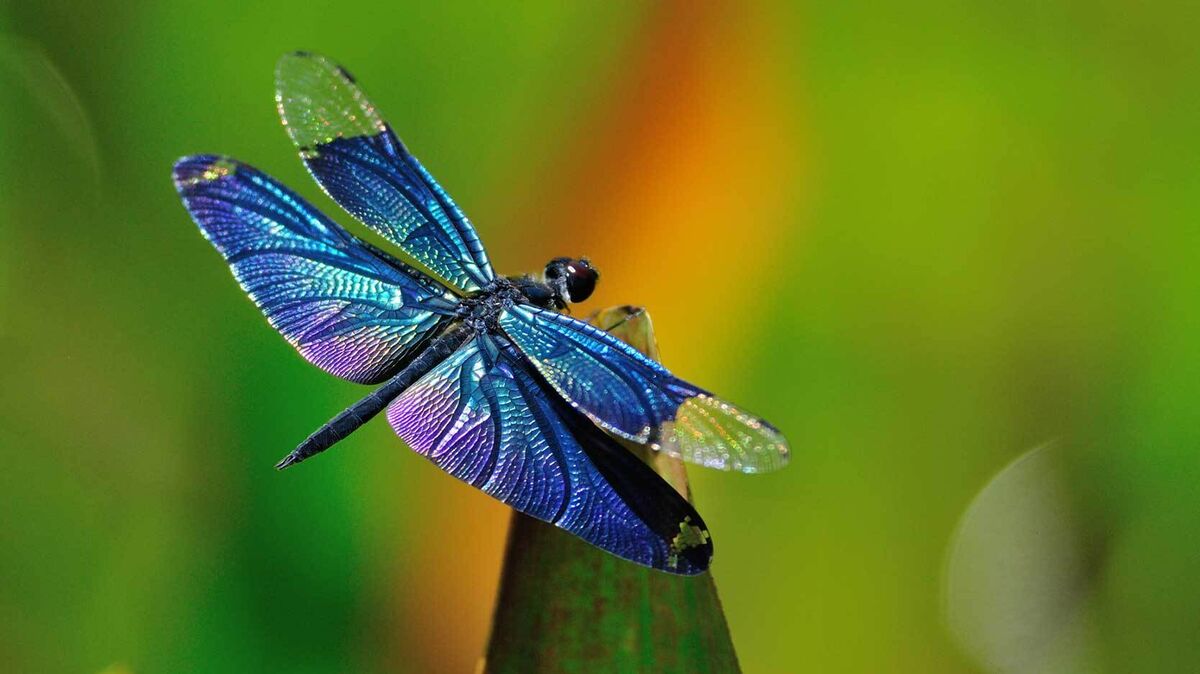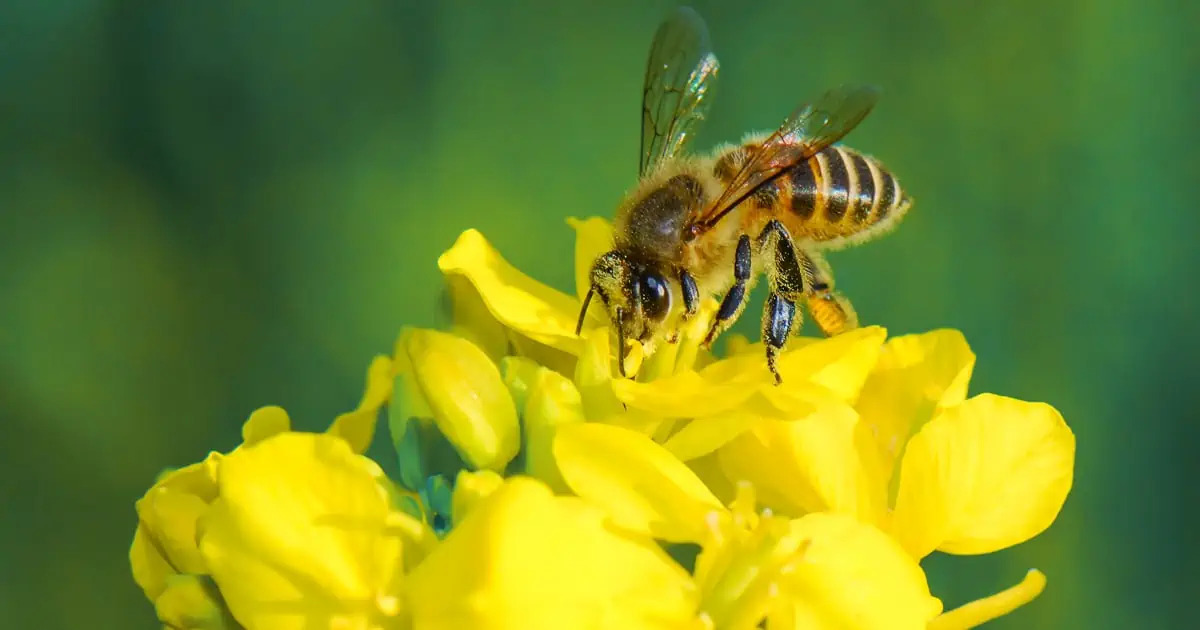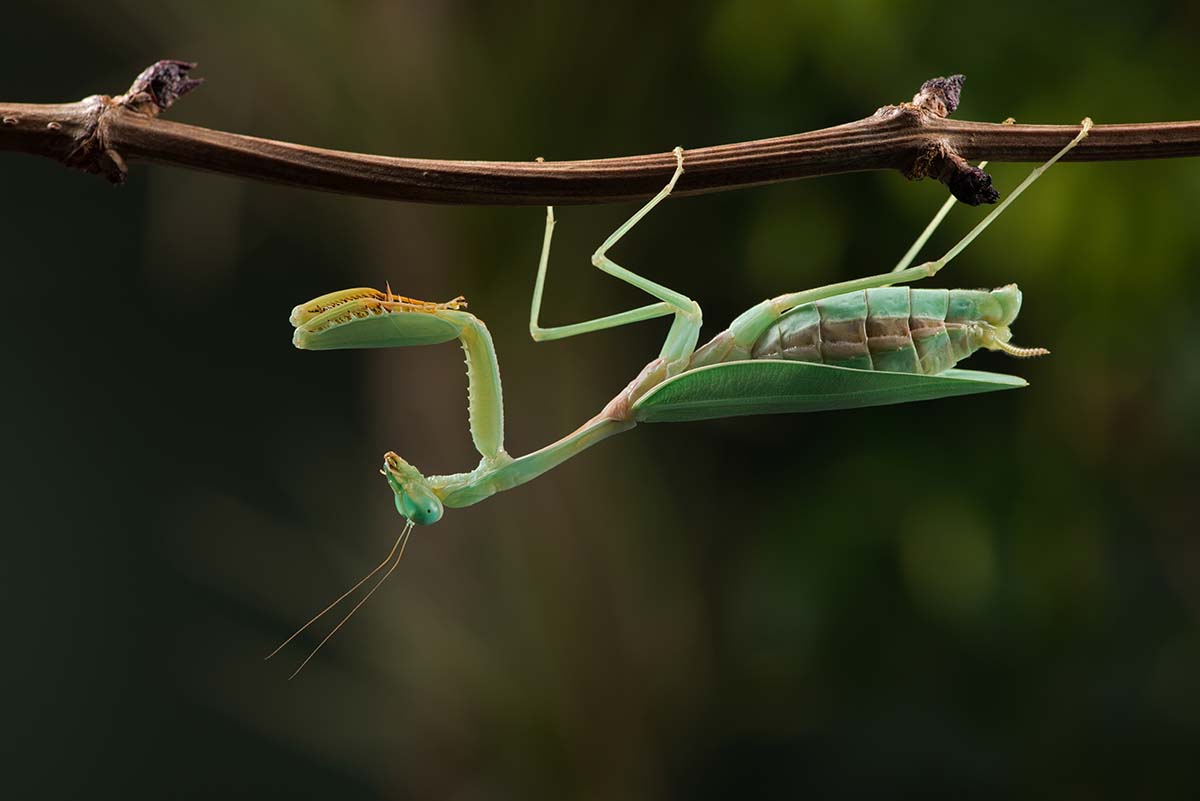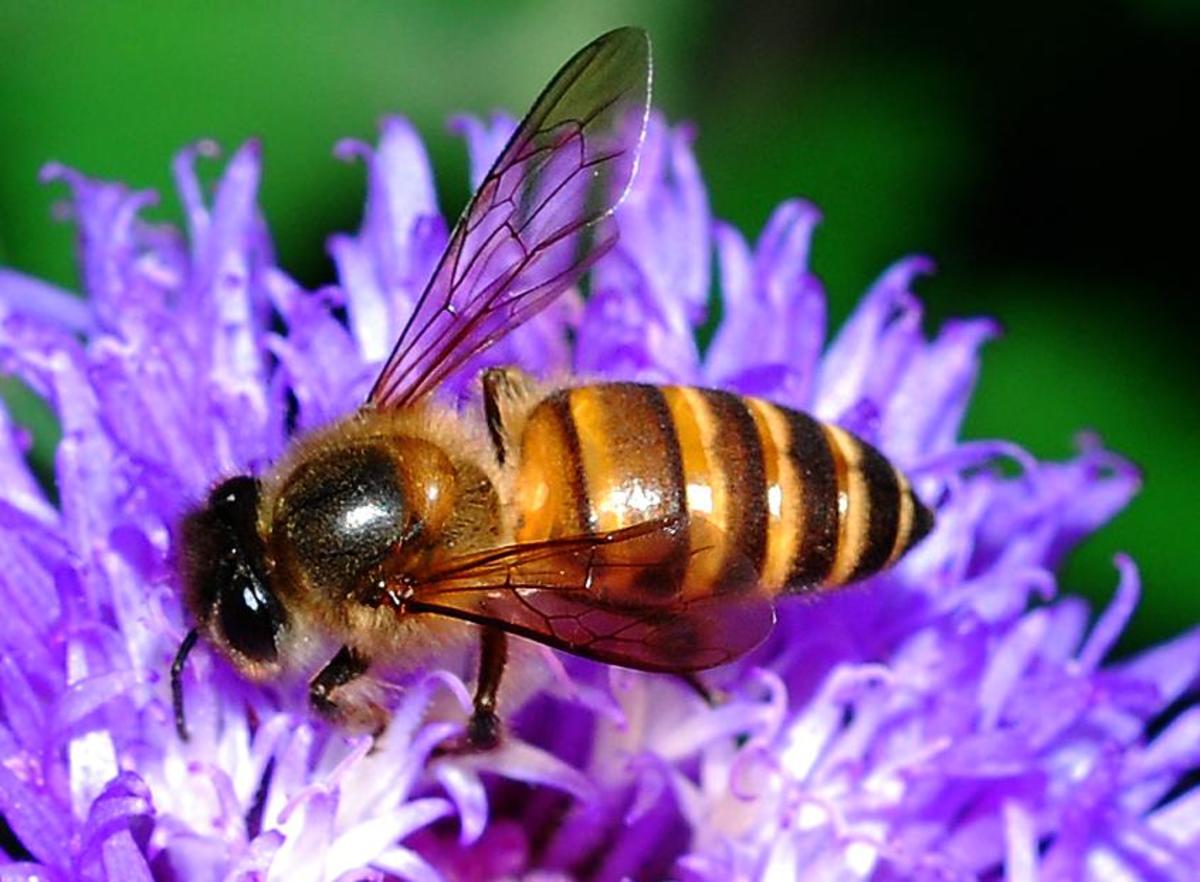Home>Gardening News and Trends>Latest News>How Do Insects Communicate
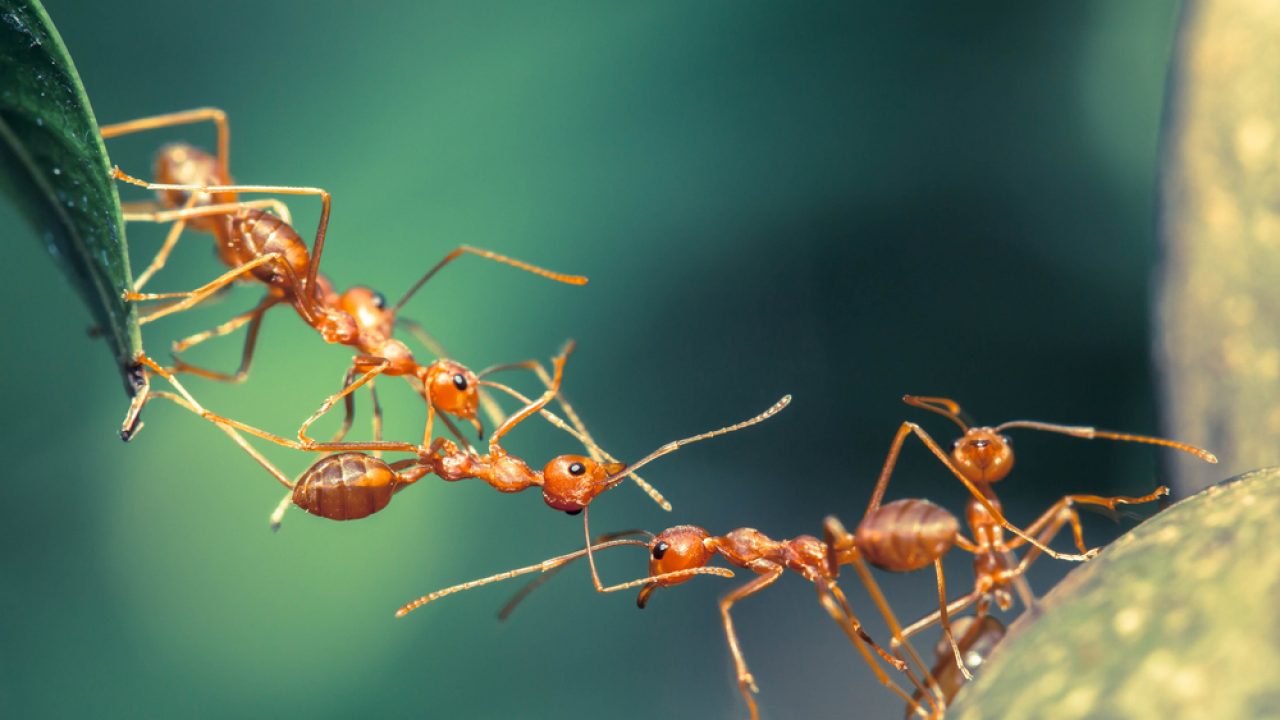

Latest News
How Do Insects Communicate
Modified: January 22, 2024
Discover the intriguing ways insects communicate in our latest news. Explore their fascinating techniques of signals and behaviors to convey messages within their colonies.
(Many of the links in this article redirect to a specific reviewed product. Your purchase of these products through affiliate links helps to generate commission for Chicagolandgardening.com, at no extra cost. Learn more)
Table of Contents
Introduction
In the captivating world of insects, communication is essential for their survival and reproduction. While they may lack the spoken language capabilities of humans, insects have developed a remarkable array of communication methods to convey messages to one another. Through visual, chemical, acoustic, tactile, and vibrational signals, these tiny creatures are able to transmit vital information about mating, aggression, territory, and more.
Insects employ various types of signals to communicate with members of their own species, as well as with other organisms. These signals can be used for a wide range of purposes, such as finding mates, warning of danger, marking territory, and coordinating group activities. The diverse strategies that insects employ highlight their remarkable adaptability and ingenuity.
While some forms of insect communication may seem familiar to us, such as visual signals and sounds, others are quite unique and fascinating. Chemical signals, for example, are particularly important for many insects, as they can transmit information over long distances and allow for intricate communication networks.
In this article, we will explore the different methods of insect communication, shedding light on the incredible ways in which these small creatures interact and connect with their environment. We will delve into the world of visual signals, chemical signals, acoustic signals, tactile signals, and vibrational signals, and examine how insects use these methods individually or in combination to convey messages effectively.
Furthermore, we will explore the intriguing topic of multimodal communication, where insects integrate multiple types of signals to enhance the clarity and effectiveness of their messages. Lastly, we will touch upon the fascinating subject of interspecific communication, where different insect species interact and communicate with each other.
Get ready to embark on a journey into the extraordinary world of insect communication, where the tiniest of creatures exhibit complex social behaviors and astound us with their ability to interact and communicate in ways we never imagined.
Visual Signals
Visual signals play a crucial role in insect communication, allowing individuals to convey information through colors, patterns, body postures, and movements. Insects have evolved a wide range of visual signals to attract mates, warn of danger, establish dominance, and communicate their presence to competitors.
One common visual signal is the use of bright and vibrant colors. Many insects, such as butterflies and beetles, have elaborate and eye-catching color patterns on their wings or bodies. These colors serve multiple purposes, including attracting potential mates, advertising their toxicity or unpalatability to predators, and establishing their territorial boundaries.
Another visual signal is body postures and movements. Certain insects, like the praying mantis, can adopt distinct body postures to signal aggression or readiness to mate. Swaying or vibrating movements can also be used to capture the attention of other insects or to display dominance over rivals.
Furthermore, visual signals can be used for camouflage and mimicry. Insects such as stick insects and leaf insects have evolved to resemble their surroundings, allowing them to blend seamlessly into their environments and avoid detection by predators. Some insects, like the viceroy butterfly, mimic the coloration and patterns of toxic species as a form of protection.
It’s important to note that visual signals are not limited to insects that can see well. Insects that are active during the night, such as moths, may use ultraviolet light patterns to communicate with each other. These UV patterns are invisible to humans but serve as clear signals for these nocturnal insects.
Overall, visual signals in insects can be highly diverse and serve a wide range of purposes. These signals are crucial in attracting mates, warning rivals, establishing territories, and ensuring the survival of the individual and its offspring. By understanding and decoding these visual signals, we can gain fascinating insights into the complex and intricate world of insect communication.
Chemical Signals
Chemical signals play a vital role in insect communication, allowing them to transmit messages over long distances and establish complex social interactions. Insects produce and detect a variety of chemical compounds, known as pheromones, which serve as powerful communication tools.
Pheromones are chemical substances released by insects into their environment. These substances are detected by specialized receptors in other individuals of the same species, eliciting specific behavioral responses. Pheromones can be used for various purposes, such as attracting mates, marking territories, coordinating group activities, and signaling danger or alarm.
One well-known example of pheromone communication is the trail-following behavior in ants. When an ant discovers a food source, it will release a trail pheromone as it returns to the colony, allowing other ants to follow the scent and find the food. This efficient mode of communication ensures the swift allocation of resources and facilitates the coordination of the entire ant colony.
In the realm of mating, pheromones play a crucial role in attracting potential mates. Female moths, for instance, release specific sex pheromones into the air to signal their readiness to mate. Male moths, equipped with specialized antennae designed to detect these pheromones, will track the scent to locate the female for reproduction.
Chemical signals are not limited to communication within a single species. Insects can also use chemical cues to interact with other organisms. For example, some parasitoid wasps can detect specific chemical cues produced by plants in response to herbivore damage. These cues indirectly inform the wasps about the presence of potential hosts and guide their search for suitable egg-laying sites.
The ability of insects to produce and detect a wide array of pheromones demonstrates their remarkable adaptability and ability to navigate their surroundings through chemical communication. By deciphering these intricate chemical codes, scientists can gain insights into the behavior, ecology, and evolution of insects, while also developing innovative strategies for pest control and conservation efforts.
Acoustic Signals
Acoustic signals, or sounds, are another fascinating method of communication used by insects. From chirping crickets to buzzing bees, insects have evolved a remarkable variety of acoustic signals to convey messages and communicate with members of their own species.
One well-known example of acoustic communication is the mating call of male crickets. They produce a series of rhythmic chirps using specialized structures on their wings, known as stridulators. These chirps serve to attract female crickets, signaling their presence and availability for mating. Each species of cricket has a unique pattern of chirping, allowing females to identify and locate potential mates accurately.
Bees, on the other hand, use sound vibrations to communicate critical information about food sources. During a nectar-rich foraging trip, honeybees perform a “waggle dance” inside the hive, emitting specific vibrational patterns and sounds. This dance provides precise directions to other bees, indicating the distance, direction, and quality of the food source.
Some insects also use acoustic signals to defend territories or warn of danger. For example, certain species of grasshoppers produce loud and distinctive buzzing or crackling sounds by rubbing their wings or leg against their body. These signals serve as a warning to potential rivals, indicating their presence and readiness to defend their territory.
Acoustic communication is not limited to insects that produce audible sounds. Some insects, such as mosquitoes and certain beetles, communicate using ultrasonic frequencies that are beyond the range of human hearing. These ultrasonic signals can serve various purposes, including sexual attraction, navigating in dark environments, and detecting prey or predators.
Overall, acoustic signals play a crucial role in insect communication, allowing them to transmit information across distances, attract mates, defend territories, and coordinate activities. With their diverse and unique repertoire of sounds, insects demonstrate an extraordinary ability to communicate and interact with their environment in ways that continue to astound and intrigue researchers.
Tactile Signals
Tactile signals, or touch-based communication, are an important form of interaction among insects. Through physical contact, insects can convey valuable information to one another, ranging from aggression and courtship to social bonding and cooperative behavior.
One example of tactile communication is seen in social insects like ants and bees. These insects use specialized body parts, such as antennae or legs, to touch and interact with nestmates. Through these touches, they can exchange information about nest location, food sources, and even communicate alarm signals to respond to threats.
Courtship rituals in insects often involve intricate tactile behaviors. Male butterflies, for instance, may use specialized structures on their legs to stroke the antennae of a female during the mating process. This physical contact can trigger specific responses from the female, indicating her receptivity to mating.
Some insects also use tactile signals for territorial defense or aggression. For instance, certain species of beetles engage in horn-wrestling contests, where they use their horn-like structures to physically interact and establish dominance. These direct tactile interactions help in determining hierarchies within the beetles’ social structure.
Tactile communication can also occur between different species. For example, parasitoid wasps use their antennae to detect vibrations produced by potential hosts. Once they locate a suitable host larva, they use their ovipositor (a specialized egg-laying organ) to touch and inject their eggs into the host’s body.
Furthermore, insects like bees and ants engage in trophallaxis, a behavior where they share food or regurgitate liquid from their crop to feed their nestmates. This direct physical contact not only serves as a means of nourishment but also helps in strengthening social bonds within the colony.
Tactile signals allow insects to communicate and interact in close proximity, enabling them to share vital information and coordinate various behaviors. Through touch, insects can convey emotions, establish social hierarchies, locate resources, and ensure the success of critical life processes such as reproduction and survival.
Vibrational Signals
Vibrational signals are a unique and intriguing method of communication used by many insects. Unlike acoustic signals that rely on airborne sound waves, vibrational signals are transmitted through solid substrates such as plants, soil, or even webs. These subtle vibrations allow insects to communicate with one another and convey important information.
One common example of vibrational communication is seen in social insects like bees and ants. When a forager bee returns to the hive, it performs a “waggle dance” on the honeycomb, vigorously vibrating its abdomen. These vibrations convey valuable information to other bees, indicating the direction and distance of a productive food source. By interpreting the intensity and frequency of the vibrations, fellow bees can navigate and locate the food with great precision.
Ants also use vibrational signals to coordinate and organize their activities within the colony. They produce specific vibrations by tapping their mandibles or legs on the ground or substrate. These vibrations serve as communication channels for tasks such as recruitment, alarm signaling, and territory marking, allowing ants to work collectively towards their common goals.
Some insects rely on vibrational signals for courtship and mating. Male treehoppers, for example, produce vibrational signals by vibrating their abdomen against plant stems or leaves. These vibrations attract females and signal the male’s interest and availability for mating.
Vibrational signals can also be used as a defense mechanism. Certain caterpillars create vibrations by rapidly shaking their bodies when they sense a potential threat. These vibrations can deter predators or parasitoids, warning them of the caterpillar’s unpalatability or poisonous defenses.
In addition to social interactions and defense, vibrational signals are utilized by insects for species recognition and communication within the same species. For instance, many insects produce distinct vibrational signals during territorial disputes to establish dominance or defend their territory against intruders.
Vibrational communication allows insects to transmit and receive information effectively in environments where other forms of communication may be hindered. By tapping into the subtle world of vibrations, insects have developed an intricate and efficient method of communication that plays a crucial role in their survival, reproduction, and social interactions.
Multimodal Communication
Insects are masters of multimodal communication, employing multiple types of signals simultaneously to enhance the clarity and effectiveness of their messages. Multimodal communication involves the integration of different sensory channels such as visual, acoustic, chemical, and tactile signals, allowing insects to convey comprehensive and nuanced information.
One example of multimodal communication is seen in fireflies. These bioluminescent insects produce flashes of light, combining visual and acoustic signals to attract mates. The rhythmic patterns of their light flashes are synchronized with specific sound signals, creating a coordinated and captivating display that increases the chances of successful courtship.
Another fascinating example of multimodal communication is found in bees. They use a combination of visual and chemical cues to locate and collect nectar from flowers. Bees have the ability to perceive and recognize specific color patterns on flowers, guiding them to the rich nectar reward. Additionally, they rely on the sweet floral scent released by the flowers as a chemical signal to identify suitable food sources.
Multimodal communication is not limited to communication within the same species. Insects can also use multimodal signals to interact with other organisms. For instance, certain parasitic wasps deposit their eggs on specific host plants. They use a combination of chemical cues emitted by the plant and visual cues from the surrounding environment to identify suitable host plants for their offspring.
Furthermore, multimodal communication is crucial during predator-prey interactions. Some insects have evolved to mimic the appearance, behavior, and even the chemical signals of other organisms as a form of defense. For example, hoverflies resemble bees or wasps visually and emit similar buzzing sounds, cautioning potential predators to stay away.
Overall, multimodal communication allows insects to effectively convey information using a diverse range of signals. By combining different sensory channels, insects can communicate more accurately, increase the likelihood of successful interactions, and convey a more comprehensive message to their intended recipients.
Interspecific Communication
Insects not only communicate within their own species but also engage in interspecific communication, interacting and exchanging information with other insect species. These interactions can be mutualistic, antagonistic, or simply informative, providing insights into the complex and interconnected world of insects.
One fascinating example of interspecific communication is seen in ants and aphids. Certain species of ants form a symbiotic relationship with aphids, where they “farm” these tiny insects for their sweet honeydew secretions. The ants communicate with the aphids through physical interactions, such as antennation and tapping movements, to signal and control the production of honeydew.
Interspecific communication can also occur between predatory and prey species. Some insects have developed mechanisms to detect and respond to the chemical signals produced by their prey. For instance, certain parasitoid wasps can detect the chemical signals emitted by caterpillars when they are under attack by predators or parasitoids. These wasps use these signals as cues to locate potential hosts and lay their eggs.
Insects can also exploit interspecific signals for deception and survival. Orchid mantises, for example, have adapted to resemble flowers both visually and through vibrational cues. These predatory insects lure unsuspecting pollinators by mimicking floral appearances and movements. When the pollinators approach, the mantises strike, capturing their prey.
Interspecific communication can also involve chemical mimicry. Some insects produce pheromones or chemicals that mimic those of a different species, tricking potential mates or competitors into responding inappropriately. This tactic can provide a competitive advantage or enable survival by avoiding territorial conflicts.
Furthermore, interspecific communication can occur between different species within a community, facilitating information sharing and coordination. For example, social wasps and honeybees can communicate the presence of food sources to other species by depositing pheromones on flowers. This sharing of information can benefit multiple insect species in locating and exploiting available resources more efficiently.
Overall, interspecific communication in insects is diverse and plays a significant role in shaping ecological interactions and adaptations. These exchanges of information between different species reveal the intricacies of insect behavior and showcase the complex web of relationships that exist in the natural world.
Conclusion
The world of insect communication is diverse, captivating, and multifaceted. Insects have developed a remarkable array of signals and cues, allowing them to convey vital information to one another and interact with their environment effectively. From visual and chemical signals to acoustic, tactile, and vibrational cues, insects utilize a combination of sensory channels to transmit messages and coordinate important behaviors.
Visual signals, such as vibrant colors, intricate patterns, body postures, and movements, enable insects to attract mates, establish dominance, and mark territories. Chemical signals, in the form of pheromones, serve as powerful communication tools, allowing insects to convey information about mating availability, food sources, and territory boundaries.
The use of acoustic signals, or sounds, enables insects to communicate across distances, signal danger or alarm, and attract mates. Tactile signals, through physical contact and interactions, allow insects to share information, establish social bonds, and coordinate activities within colonies.
Vibrational signals, transmitted through solid substrates, provide a unique communication method for insects to convey information about food sources, territory defense, and courtship. Additionally, insects engage in multimodal communication, combining different sensory channels to enhance the clarity and effectiveness of their messages.
Interspecific communication adds another layer to the complexity of insect interactions, as different species exchange information for mutualistic partnerships, predator-prey dynamics, or deceptive tactics. This interspecies communication provides insights into the interconnectedness of the insect world and highlights the adaptability and ingenuity of these small creatures.
Understanding insect communication not only offers fascinating insights into their behavior and social interactions but also presents opportunities for practical applications. The study of insect communication can aid in developing innovative pest control strategies, conservation efforts, and even inspire technological advancements in fields such as robotics and biomimetics.
In conclusion, the diverse mechanisms of insect communication highlight the incredible adaptability and complexity of the natural world. The ability of insects to convey messages through various signals and integrate different sensory channels is a testament to their ingenuity and the important role communication plays in their survival and reproductive success.

